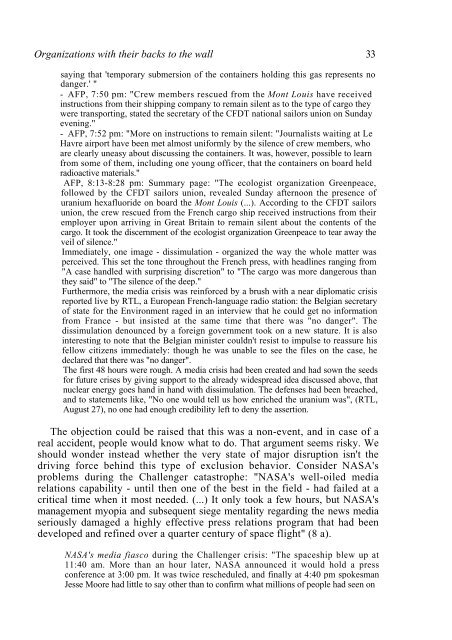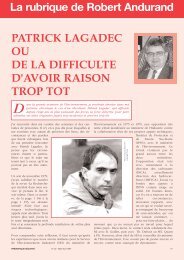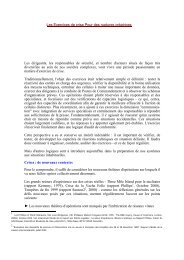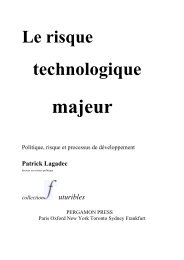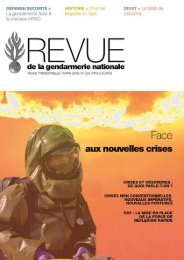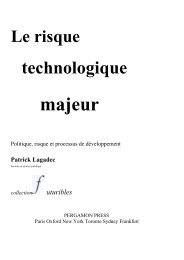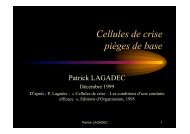STATES OF EMERGENCY - Patrick Lagadec
STATES OF EMERGENCY - Patrick Lagadec
STATES OF EMERGENCY - Patrick Lagadec
You also want an ePaper? Increase the reach of your titles
YUMPU automatically turns print PDFs into web optimized ePapers that Google loves.
Organizations with their backs to the wall 33saying that 'temporary submersion of the containers holding this gas represents nodanger.' "- AFP, 7:50 pm: "Crew members rescued from the Mont Louis have receivedinstructions from their shipping company to remain silent as to the type of cargo theywere transporting, stated the secretary of the CFDT national sailors union on Sundayevening."- AFP, 7:52 pm: "More on instructions to remain silent: "Journalists waiting at LeHavre airport have been met almost uniformly by the silence of crew members, whoare clearly uneasy about discussing the containers. It was, however, possible to learnfrom some of them, including one young officer, that the containers on board heldradioactive materials."AFP, 8:13-8:28 pm: Summary page: "The ecologist organization Greenpeace,followed by the CFDT sailors union, revealed Sunday afternoon the presence ofuranium hexafluoride on board the Mont Louis (...). According to the CFDT sailorsunion, the crew rescued from the French cargo ship received instructions from theiremployer upon arriving in Great Britain to remain silent about the contents of thecargo. It took the discernment of the ecologist organization Greenpeace to tear away theveil of silence."Immediately, one image - dissimulation - organized the way the whole matter wasperceived. This set the tone throughout the French press, with headlines ranging from"A case handled with surprising discretion" to "The cargo was more dangerous thanthey said" to "The silence of the deep."Furthermore, the media crisis was reinforced by a brush with a near diplomatic crisisreported live by RTL, a European French-language radio station: the Belgian secretaryof state for the Environment raged in an interview that he could get no informationfrom France - but insisted at the same time that there was "no danger". Thedissimulation denounced by a foreign government took on a new stature. It is alsointeresting to note that the Belgian minister couldn't resist to impulse to reassure hisfellow citizens immediately: though he was unable to see the files on the case, hedeclared that there was "no danger".The first 48 hours were rough. A media crisis had been created and had sown the seedsfor future crises by giving support to the already widespread idea discussed above, thatnuclear energy goes hand in hand with dissimulation. The defenses had been breached,and to statements like, "No one would tell us how enriched the uranium was", (RTL,August 27), no one had enough credibility left to deny the assertion.The objection could be raised that this was a non-event, and in case of areal accident, people would know what to do. That argument seems risky. Weshould wonder instead whether the very state of major disruption isn't thedriving force behind this type of exclusion behavior. Consider NASA'sproblems during the Challenger catastrophe: "NASA's well-oiled mediarelations capability - until then one of the best in the field - had failed at acritical time when it most needed. (...) It only took a few hours, but NASA'smanagement myopia and subsequent siege mentality regarding the news mediaseriously damaged a highly effective press relations program that had beendeveloped and refined over a quarter century of space flight" (8 a).NASA's media fiasco during the Challenger crisis: "The spaceship blew up at11:40 am. More than an hour later, NASA announced it would hold a pressconference at 3:00 pm. It was twice rescheduled, and finally at 4:40 pm spokesmanJesse Moore had little to say other than to confirm what millions of people had seen on


